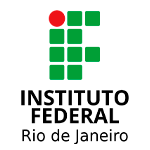Contextos e Questões sobre EaD: um Estudo de Caso com um Estudante Cego
DOI:
https://doi.org/10.18264/eadf.v14i1.2239Palavras-chave:
Ensino superior, Deficiência visual, Educação a distância, InclusãoResumo
Este artigo consiste em um estudo de caso que trata de questões relativas à inclusão da pessoa com deficiência na educação a distância. Através de uma entrevista com um discente com deficiência visual desta modalidade de ensino, buscamos compreender aspectos significativos da relação entre educação a distância e a inclusão. Percebemos que a educação a distância tem potencial inclusivo para este discente desde sua origem, eliminando barreiras presentes na educação presencial. A evolução das tecnologias de informação e comunicação é outro fator que colabora para uma educação mais acessível. No entanto, percebe-se que ainda são necessárias melhorias gerais para uma educação inclusiva adequada.
Palavras-chave: Ensino superior. Educação a distância. Inclusão. Deficiência visual.
Downloads
Referências
ANDRE, M. O que é um estudo de caso qualitativo em educação? Revista da FAAEBA: Educação e Contemporaneidade, Salvador, v. 22, n. 40, p. 95-103, dez. 2013. Disponível em: http://educa.fcc.org.br/scielo.php?script=sci_arttext&pid=S0104-70432013000200009&lng=pt&nrm=iso - Acesso em: 21 nov. 23.
BRASIL. Instituto Nacional de Estudos e Pesquisas Educacionais Anísio Teixeira (Inep). Censo da Educação Superior 2022: notas estatísticas. Brasília, DF: Inep, 2023. Disponível em: https://download.inep.gov.br/publicacoes/institucionais/estatisticas_e_indicadores/notas_estatisticas_censo_escolar_2022.pdf - Acesso em: 29 nov. 23.
BRASIL. Instituto Nacional de Estudos e Pesquisas Educacionais Anísio Teixeira (Inep). Censo da Educação Superior 2022: divulgação dos resultados. Brasília, DF: Inep, 2023. Disponível em: https://download.inep.gov.br/educacao_superior/censo_superior/documentos/2022/apresentacao_censo_da_educacao_superior_2022.pdf - Acesso em: 13 jan. 23.
BURCI, T. V. L. et al Educação a distância: o uso das tecnologias como instrumento de inclusão educacional e social. Colloquium Humanarum, Presidente Prudente, v. 14, n. 4, p. 46-51 out/dez, 2017. Disponível em: https://revistas.unoeste.br/index.php/ch/article/view/2217/2047 - Acesso em: 25 nov. 2023.
BURCI, T. V. L.; COSTA, M. L. F. Inclusão de pessoas com deficiência visual na educação a distância. Acta Scientiarum. Education, v. 40, n. 2, p. 1-10, 2018. Disponível em: https://www.redalyc.org/journal/3033/303357561003/303357561003.pdf - Acesso em: 25 nov. 2023.
LÜDKE, M; ANDRÉ, M. E. D. A. Pesquisa em educação: abordagens qualitativas. [2. ed]. - [Reimpe.]. - Rio de Janeiro: E.P. U., 2018.
MOORE, Michael G. Teoria da distância transacional. Revista Brasileira de Aprendizagem Aberta e a Distância, v. 1, 2002. Disponível em: https://www.abed.org.br/revistacientifica/Revista_PDF_Doc/2002_Teoria_Distancia_Transacional_Michael_Moore.pdf - Acesso em: 22 jan. 24
SASSAKI, R. K. As sete dimensões da acessibilidade. São Paulo-SP: Larvatus Prodeo, 300p., 2019 [a], 2019.
SILVA, Y.O; TOSCHI, M.S. Mediação na educação – Reflexões na modalidade a distância. Goiania: Educativa 2015.
SOARES, R de A; SILVA. G.A. Regulamentos da EaD no Brasil e o impacto da Portaria nº 343/2020 no Ensino Superior. Ead em Foco, Rio de Janeiro, v. 10, n.3, 2020. Disponível em: https://eademfoco.cecierj.edu.br/index.php/Revista/article/view/1043/550 - Acesso em: 25 nov. 2023.
TAVARES, D. C. et al. A Política de Cooperação como Estratégia para a Inclusão de Pessoas com Deficiência Visual na Educação a Distância. EaD em Foco, v. 12, n. 2, 1784, 2022.
Disponível em: https://eademfoco.cecierj.edu.br/index.php/Revista/article/view/1784/778 -Acesso em: 22 jan. 24.
TORI, R. Educação sem distância. As tecnologias interativas na redução de distâncias em ensino e aprendizagem. São Paulo: Editora Artesanato Educacional, 2017.
Downloads
Publicado
Como Citar
Edição
Seção
Licença
Copyright (c) 2024 EaD em Foco

Este trabalho está licenciado sob uma licença Creative Commons Attribution 4.0 International License.
Todos os artigos publicados na Revista EaD em Foco recebem a licença Creative Commons - Atribuição 4.0 Internacional (CC BY 4.0). Todas as publicações subsequentes, completas ou parciais, deverão ser feitas com o reconhecimento, nas citações, da Revista EaD em Foco como a editora original do artigo.













